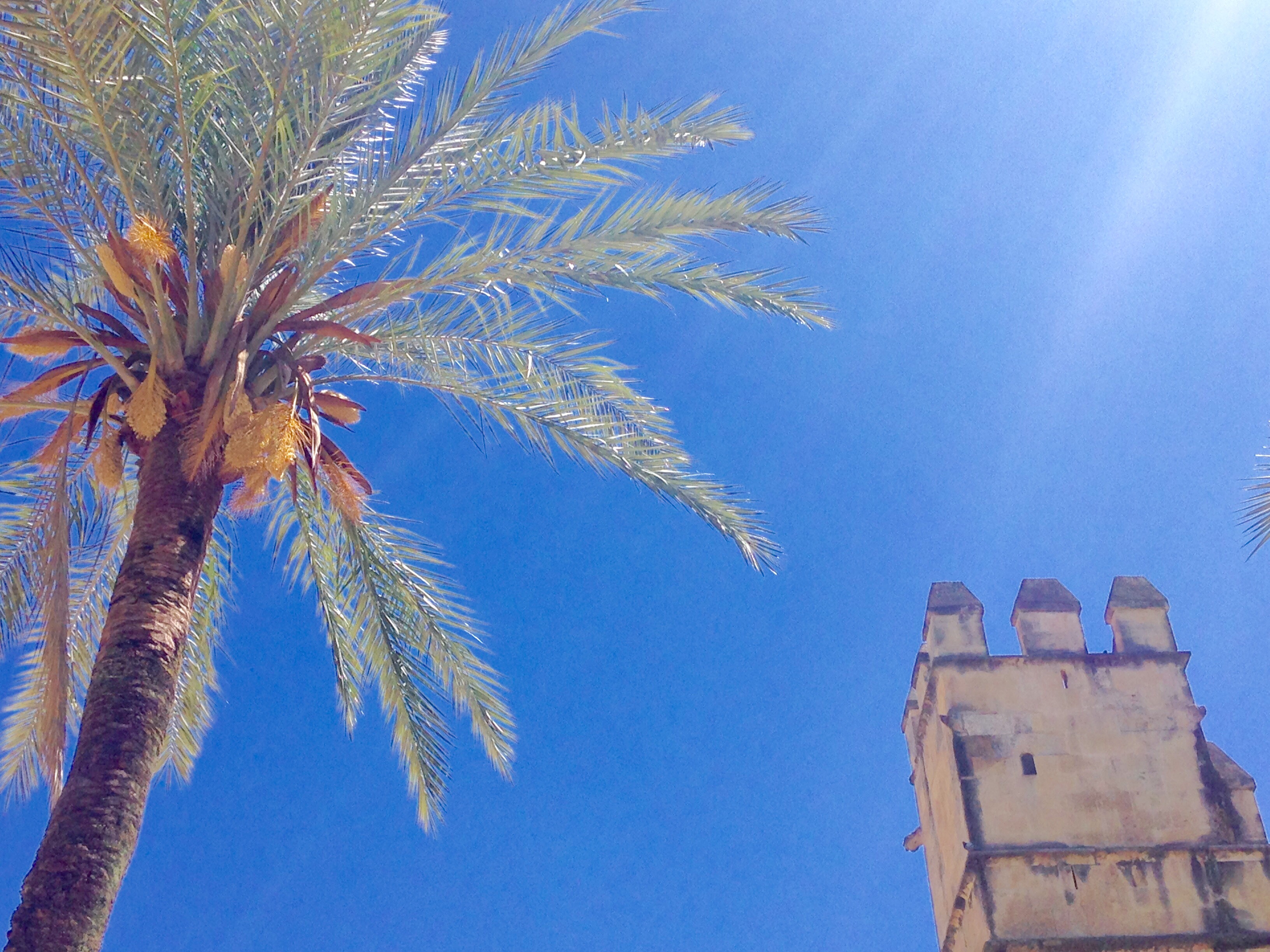Day 30
The historic quarter in Córdoba is a World Heritage Site. In the 10th century this city had 1,000 mosques, 800 Arab baths, and an advanced street lighting system! And you can’t miss the Great Mosque on its landscape. As in the other places I have visited, the history is palpable walking by and into one ancient structure after another!
The Jewish Quarter also dates from that period. It spreads out from the Mosque to the walls and the Almodóvar Gate, just steps away from the Roman Bridge. It is made up of network of narrow streets with white-washed façades adorned with tiles and grilles. I really enjoyed getting lost in those winding and beautiful avenues!!

One of the main reasons for including Córdoba in my itinerary was the allure of their Festival of Patios held annually the first week in May. Many of the homes are built around a garden courtyard even well back into the period when the Romans were in occupation. By creating gardens of plants and water features, families establish a tranquil oasis in which to beat the heat! People got so carried away with their own personal styles of decorating that in 1918 the Contest of the Patios was established, sponsored by the Cool by City Hall. At this time many locals open up their courtyards for public viewing.

I spent about an hour and a half writing out my route to two of the six outlined districts so that I could abandon the map since a) the writing is very tiny, b) it’s in Spanish, and c) my vision isn’t so hot… Plus d) they had colored lines drawn through different routes which kind of blotted out the (very long) names.
Well, needless to say, about an hour into my wandering I hadn’t even found the first street that I was going to start on. Ironically I found countless grocery stores and tiendas which I couldn’t for the life of me find yesterday… Initially I was so disappointed I was on the verge of tears. Then I realized after pulling my map out that I was close to a district that I didn’t consider earlier in my planning stages, thinking it too far out to realistically fit into my schedule. So I decided to go for it. The same dang thing happened – I just could not locate a street as noted on the map to jump onto the route!!
Finally I enjoyed a café solo, accepted my fate, decided to “let Go and let God” and embraced the wandering of those gorgeous meandering calles! I began to enjoy myself thoroughly!! Eventually I began to recognize the names of some of the streets that I had written down earlier and I was able to orient myself. As well, I started to see others looking at and carrying maps and ducking into doorways! Success!! Amen, AMEN, Can I get a witness?!!
Literally, the courtyards are through unsuspecting doors opening off the narrow, winding avenues! Such beauty and creativity did I feast my eyes upon!! And not just me, but hundreds of other tourists were at it with me… it’s hard for even me to believe, but eventually I tired after viewing about twenty five patios and headed back to my hotel to make a wonderful mixed green and veggie salad for myself with groceries purchased on my way back!
Later I ventured out to see the Mesquita which was Amazing (and extremely crowded). The varied influences in the structures of peoples over the years is crazy in totality. From Wikipedia: “The Mosque–Cathedral of Córdoba[3][4] (Spanish: Mezquita-Catedral de Córdoba), also known as the Great Mosque of Córdoba[2][4][5](Spanish: Mezquita de Córdoba) and the Mezquita,[6][7][8] whose ecclesiasticalname is the Cathedral of Our Lady of the Assumption (Spanish: Catedral de Nuestra Señora de la Asunción),[9] is the Catholic cathedral of the Diocese of Córdoba dedicated to the Assumption of the Virgin Mary and located in the Spanish region of Andalusia.[10] The structure is regarded as one of the most accomplished monuments of Moorish architecture.
The site was originally a small temple of Christian Visigoth origin, the CatholicBasilica of Saint Vincent of Lérins.[11][12][13] When Muslims conquered the Iberian peninsula in 711, the church was first divided into Muslim and Christian halves. This sharing arrangement of the site lasted until 784, when the Christian half was purchased by the Emir ‘Abd al-Rahman I, who then proceeded to demolish the original structure and build the grand mosque of Córdoba on its ground.[12][14] Córdoba returned to Christian rule in 1236 during the Reconquista, and the building was converted to a Roman Catholic church, culminating in the insertion of a Renaissance cathedral nave in the 16th century.[12][13]The Catholic Cathedral is built around the Mosque – not so very congruent…


















































Leave a Reply